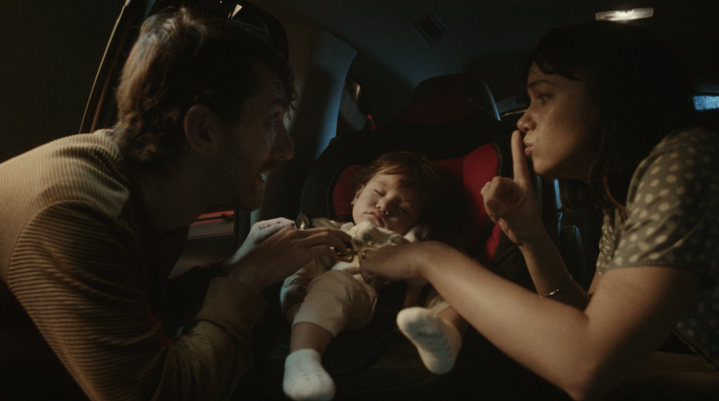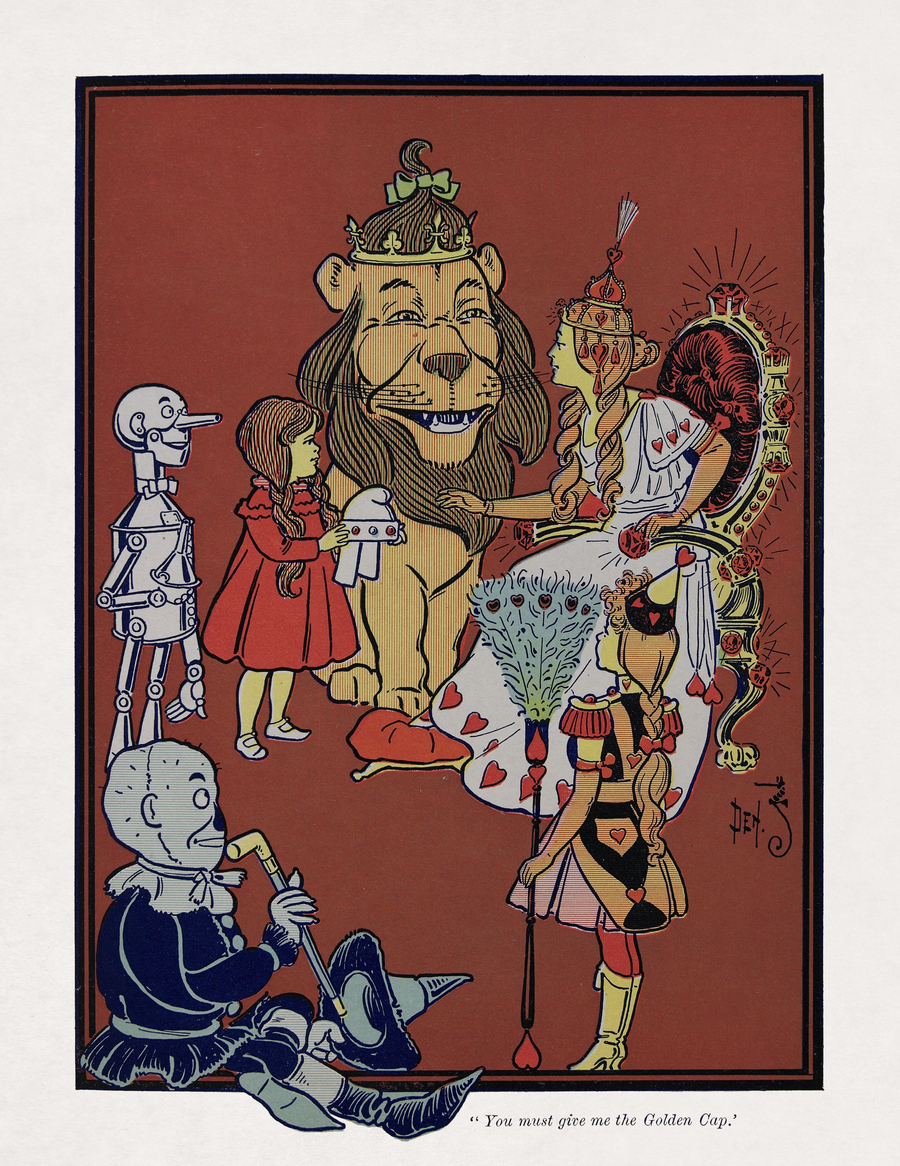
Jessica Helfand|Essays, Vignelli
September 16, 2010
The Kindness of Strangers

Detail from Christopher Webb’s 1934 Faith, Hope and Charity window at Ingoldisthorpe, Norfolk, UK.Â
JULIE LASKY
David, on September 14, you posted an essay on your blog Design-Altruism-Project, called “Arguing with Success,” which challenged the recent surge of interest in socially relevant design — the many practitioners, books and websites (including this one) that have sprung up in the past months or years. “It’s so terribly trendy to care, about the poor, the environment, and every form of ‘betterment’ that I begin to assume we must be selling more design by fetishizing social relevance,” you wrote. You went on to question the value of several social-design activities and organizations, among them the Designers Accord, which was founded two years ago by Valerie. “Social networking has struck the design world with the force of the Indonesian tsunami bringing changes of sorts, but no guarantees of lasting change,” you commented. And to be frank, your essay had a tsunami-like feeling about it, as if an emotional dam had broken and you just had to let out your indignation. Was there something in particular that set you off?
DAVID STAIRS
First, let me thank you for this opportunity to discuss/debate the social design phenomenon. Just to warn you in advance, Rob Peters, former president of ICOGRADA and a friend, once asked me if I was a “malcontent.” I think he ultimately decided that we both approach the same problems, he from the inside, and I from the outside. In this case it may sound like I’d been reading Ivan Illich on expertism, but that was the last D-A-P essay.
To attempt to answer your question, many things make me indignant, but none more so than arrogance. One of the things living in the developing world teaches is humility; the people there are, for the most part, humble to the point of self-deprecation. They shouldn’t be, but they are. They’ve come to expect the industrial north to provide innovation, assist with industrialization, even influence their form of government as the price of aid. They treat us as “experts” and this results in “us” believing we have better answers.
We, the educated industrialized north, impose these “answers” on our world almost as a birthright. One of the recent phenomena that we’ve been privileged to have access to is computing technology. Unlike cell phone technology, which is more widely dispersed, computing technology and all it implies (affluence, privilege, easy access to electricity) is out of the reach of most of the world’s population. This means that a select few, let’s say design professionals for the sake of argument (but there are many others), get to make decisions to help, benefit and control others less fortunate and less connected.
If as a designer you are affluent and successful enough to have time to help others, you must locate those in need of assistance: flood victims, AIDS orphans, the rural poor or even the environment. Elsewhere I’ve called this “altruism as design methodology,” Projects are not hard to find! Increasingly, these projects have become the stock-in-trade of design school programs and studios for a variety of reasons — recruitment, public relations, etc. It’s not that altruism’s making a comeback so much as that people are beginning to see altruism as potentially profitable.
In 2008, a former student of mine named Joyce Epolito won a Sappi award for her Chicago Welcomes You project for Karen refugee people (you can read more about this soon at D-A-P). When this year’s awards were announced, I noticed that IDEO was a winner. Of course, the awards program is open to anyone, but when big, powerful studios with tremendous resources are competing for the same pot, it’s more than “fetishizing social relevance”; it’s the coopting of social relevance by industry. And the whole cycle of “expertism” resumes on a new level.
VALERIE CASEY
David, I agree wholeheartedly with your critique of the current state of design. It does feel like we’re experiencing some kind of generalized social (design) anxiety disorder where the motivation to work on these projects has been overwhelmed by the motivation not to be left out of the party.
In the two to three years I’ve been truly active in this space, I can’t believe how much design seems to have changed. It reminds me of the early 2000s when integrating business and brand strategy into design practice was all the rage. Embracing social-impact work is the new price of entry for most designers now, and it has led to a lot of noise.
I’m not prepared to go as far as you about all the attention being bad. Twitter, etc., makes everything exponentially more annoying, but overall I actually think the rise in awareness is a positive shift. Understanding context, and the systems in which we are a part, is essential for any designer to make a real intervention in our world. I’m optimistic about what will come out of the multiplicity of voices. The more people work on solving these seemingly intractable challenges, the more likely we’ll get to good solutions. I don’t begrudge anyone with the inclination to do something positive to try.
And I agree with you that these social design projects need to be viewed critically. We often give a pass to this kind of work — perhaps with this first-world arrogance you referenced — but I think it’s more likely that we haven’t developed the tools, methodologies and tone to be critical and productive. We are woefully immature in this dimension — designers demand higher-order challenges but we still ascribe value based on a beauty shot and a 200-word description.
So if we agree on all of these points, why did I find your post so unsettling? David, I believe you have almost made it impossible to actually have a dialogue about the topic. Your diatribe so thoroughly attacked every attempt, aspiration, program, project, plan for designers to use their craft in new ways. All of the people on your bucket list seem either to have been alienated further, or have (strategically or fearfully) congratulated you for your insight. And wit!
In my mind you’ve left little room for your targets to describe their intentions and the results of their efforts. And I have to assume that because you’ve made errors about the Designers Accord that you must be running loose with other projects too.
So I ask you, can a productive discourse actually happen? Maybe that’s our chance here.
LASKY
David, an observation I’d like to add is the divide between people like you who have occupied the social change space for a while and people like me who only recently arrived. In fact, Change Observer was quietly excoriated by one onlooker for lacking humility. We had insufficiently acknowledged the many groups working in this area for years. Is there an insurmountable gap between those who have labored altruistically in behalf of needy causes and others who have only recently joined the party?
STAIRS
Julie, let me first answer your question in a word: “No.” But there’s a proviso. If you read the comments to my screed you’ll see names like Cameron Sinclair and John Thackara — people not known for myopia —and they generally agree that the dialogue needs to reach beyond the notion of social change.
Years ago, when Bill Drenttel asked me whether DWB could play a role in the Katrina disaster, I told him disaster relief was not our mission. I’ve had many opportunities to regret that decision. It would have been great for PR. But it took into account the fact that there’s a difference between help and meddling. Organizations like the American Red Cross and Oxfam had so much more experience in such situations than we did, just because our name said “Designers” did not give us a license to meddle.
There’s bound to be some who disagree with the grant you guys received to remake part of Design Observer as a conduit of change, and I can’t even say I believe that “someone had to do it.” Ultimately it’s less a matter of whether DO agrees with DA and DWB than whether any combination of design acronyms is needed to “intervene” in needy causes. That’s what drove me to write the piece in the first place.
Valerie, I would not have agreed to this conversation if I were attempting to close the door on discussion. My disappointment with and criticism of our profession is well known. (I’m not anticipating any invitations to speak at design conferences.) And I’m pretty sure nothing I’ve said will dissuade any designers from “using their craft in new ways.” I certainly did expect the wagons to be circled. But if the general dialogue is expanded, I’ll don my Steve Martin arrow through the head and ride away happy.
I did visit your site, and I don’t think I misunderstood your mission; the language was too unmistakable. Beginning with your four main goals, you speak about “thought-leaders” (are these the same as “change-agents”?), but this is an exclusive term. Who determines who such a person is, or is it self-evident? You also mention the “creative community,” but we must be speaking a different dialect of English because for me this would include everyone in the world. There’s a good deal about “increasing the relevance of design thinking…in strategic challenges” and defining “frameworks, tools, and value systems” (whose?), and even one brief reference to the need to “leverage insights from underrepresented geographies,” but most of this is in service to the profession.
Finally, you accuse me, and rightly, I agree, of “running loose” with my facts. But at the same time you are promoting a “Global Summit on Design Education and Sustainability” that will be driven by 100 experts from (by my fallible count) 34 schools (4 international) and 9 other organizations (several with sympathetic ties to AIGA)? Again, the language of exclusion and self-aggrandizement on your site does not inspire my confidence in your altruism.
This is not, and should not devolve into, a disagreement between Valerie Casey and David Stairs, their semantics, morals or professional affiliations. But 20 years after Brundtland, it ought to be about more than a “rise in awareness.” If designers don’t stop talking about measuring carbon footprints and establishing national design policies, no one’s gonna give a damn about them.
Perhaps it’s time for designers to stop talking altogether and practice listening.
CASEY
Thanks David. I’m delighted to move this discussion away from the David-Valerie battle of the egos into more productive territory.
I think you make some fair points about the Designers Accord. Maybe that’s a valid departure point to continue this discussion? (By the way, I would love to actually tell you more about the Designers Accord at some stage. I think you would find it more interesting, substantive and aligned with your philosophies than my apparently poorly written copy on the site represents. The Designers Accord isn’t a website, it’s a group of people doing real work, every day, all over the world.)
So let’s talk about language. Complex language is often needed to describe complex issues. But we frequently balk at complexity, saying that as designers we are supposed to be communicators, storytellers. That’s often code for over-simplifying, avoiding having real discussion and debate, using anecdotes to dodge articulating an opinion.
Our design activism world seems to be especially hobbled by its language. Aspirational goals are wrapped up in tweet-delimited phrasing and hyperbole. Is this trend unique to design now, or is it simply the nature of current-day communication? In an increasingly post-disciplinary, global society, how can we avoid the patter of online communication but still participate in a broad conversation? If gummed up buzzwords like “thought-leader” and “creative community” are descriptive enough — albeit loosely defined — is it necessarily wrong to use them as a shortcut in communication, so we can actually get to the real work?
But maybe this isn’t about semantics and the volume of noise in the design world right now. Maybe it’s about the widening gap between the grand phrases and mission statements, and the actual measurable interventions. How can we bubble up the best work? Should we put in place some sort of governing body in the design world (not another trade organization)? Can we create a universal set of standards (not another manifesto) to help designers understand the consequences of their work, and the related responsibility for their impact?
David, throughout your career, you’ve made such an important contribution through design. As a veteran, what can you share with the next generations of design activists to help productively advance the authentic efforts?
STAIRS
Valerie, saw your picture in this week’s Time (nice picture!). Congratulations!
Language is a marvel, capable of both great precision and great sloppiness. Precise language, like scientific language, is fairly colorless and seldom rhetorical. Rhetoric, despite what Plato has Socrates say, has its uses, but precision isn’t one of them. Probably the “design activism world” you refer to has more than its share of rhetoric. This is the nature of mission statements, grant proposals and splash pages. They attempt to divert attention to themselves. I understand the need for a shorthand vocabulary for wading through the red tape. I just don’t think anyone should believe in it too deeply.
I’m beginning to question the need for “interventions.” If they can’t be partnerships, I feel they should be avoided. Arvind Lodaya speaks eloquently of the need to reverse the modernism introduced into India by the Eames Report through the NID. Where design interventions gloss over local traditions they’re glorified colonialism at best, looting at worst, and ought to be outted as such.
Man is a standards-setting creature. I assume you and our colleagues will be working on a set of standards at your upcoming conference. That standards often fail, look at the Millennium Development Goals, for example, isn’t reason not to set them. They’re made to be broken, right? And replaced with something better.
I’m more concerned with who determines what is “real work”? Are the recipients of the assistance really benefiting? There’re some pretty bad aid interventions in the world. How can we better understand what stakeholders need or want? Who takes responsibility for the impact? Cameron Sinclair thinks we ought to have a gathering where we talk about our failures. This would be one way to spread the wisdom of potential success. How about a Design Hippocratic Oath, where we vow to “do no harm”?
As for what constitutes “authentic efforts,” only history can attest. Fighting tooth and nail against a media addicted to heroizing takes effort. My baseline begins with the Biafran War in 1967–68. Médecins Sans Frontières was founded during that conflict. But some historians contend that their efforts merely prolonged the disaster. By comparison, my efforts with DWB have been small and recent. No point in glorifying things. I prefer it this way. I can only even begin to think globally on a case-by-case neighborhood basis. I certainly can’t claim any kind of authority in these matters. The choices I made, to circumvent corporate design, wouldn’t suit most design students. Unfortunately, although there are more opportunities in nonprofit design than formerly, the economy’s making the nonprofit sector more competitive than cooperative.
I guess the best advice I have for young activists is what I give to my students: “Stay awake. Create your own opportunities. Consider yourself individual only in the context of a larger community. Give back.”
CASEY
I appreciate your sentiment about design for “social impact.” It’s abundantly clear that it takes a great deal of knowledge, humility and time to create or update the products, services and systems that improve quality of life, anywhere in the world. The big surge in media attention on these projects, in the developing world especially, can make it seem like a dalliance.
I agree that the biggest priority now is how to actually measure the impact of that work over time. I know several groups are working on this too; we will inevitably have a dozen “impact scorecards” within the year. There will an appetite for this as design firms try to integrate more mindful work (in all parts of the world) as a real part of business, not a pro-bono add-on at the end of the year.
We are at saturation point with the media around design activism — it’s ironic that it’s absolutely taboo to make any criticism of that work, publicly at least (until your article!). Some have said that we don’t evaluate this new flavor of social design with the same rigor as traditional design. I actually think that this surge of design activism and social impact work has placed a large mirror in the face of the design industry — and the reflection makes us queasy. We don’t know what we are about anymore. For the first time more of us are doing work we find “meaningful” but it’s become more unsettling to be designers too. Groups are cleaving off under the guise of being purists (social Luddites!). And whereas before, when our language tripped us up we could point to an object, in the era of design thinking, we rarely have that!
I recently participated in a workshop where the hosts presented 31 sets of principles, tools, frameworks — from First Things First to Icograda’s Certification (and including the Designers Accord) — that have been created over the years to help designers be more considered and responsible in their work. (The advice you thoughtfully give your students is well covered in this set — maybe even verbatim). These have created the rise in design activism.
While I have media-fatigue, I do consider the scale of participation and degree of change to be a very positive thing. The value of having so many designers involved is that together we send a strong message to our clients and partners that we are prioritizing an integrated way of thinking that includes accounting for the upstream and downstream effects of our work. I truly believe that at this moment in time, all of these projects and programs are actually changing the value systems of designers. Regardless of whether they’re designing packaging for beefy jerky, working for the government on new collaborative systems or developing irrigation systems in South Africa, the context and consequences of their work are top of mind.
STAIRS
Okay, Valerie. If we agree that the value system of designers is changing, that it’s not just a passing fancy or a “value added,” does this new value system extend beyond the “consequences” of what is designed, or even beyond the business model of design itself, to embrace design as a universal social capacity? My experience is that even uneducated people participate in the design of their surrounding environment. Do you think our profession is mature enough to coexist with a philosophy that potentially pulls the plug on its profit margins?
CASEY
Great question, David. Is the design industry mature enough yet? Definitely not. But we’re going to have to grow up very quickly.
When I started the Designers Accord, I conceived of it as a pact between the top design firms, who would agree to work in some sort of post-competitive way and blaze new territory for everyone else. (Naive!) A few things happened: the notion of collaboration and knowledge-sharing was initially met with a deafening silence; some of the usual suspects didn’t take on the leadership positions I had imagined they would; and a great portion of the lively conversations and interesting work was happening in small firms, schools and businesses all over the world by designers of all stripes, engineers, researchers, strategists — the list goes on. You correctly observed that the phrase “creative community” could include anyone. I think that’s the point, and connecting this diverse collective has emerged as the greatest strength of the Designers Accord.
In The Ecology of Commerce, Paul Hawken wrote that we don’t have an economic problem, or an ecological problem, we have a design problem. In his brilliant commencement speech at the University of Portland, Paul basically conscripted the entire graduating class to participate in a challenge that seemed very designerly: “Do what needs to be done, and check to see if it was impossible only after you are done.” I’ve recently heard the comment that design is too important to be left to designers. Perhaps it’s actually that design is too pervasive for designers to try to manage.
As the definition of design has expanded, so have the qualifications of its practitioners. Hopefully the idea of empathy will continue to nudge the notion of the lone inventor out of the picture. I have seen a big shift in how people are working together, creating new business models and collaborations and methods for sharing — there’s a general increase in reflectiveness throughout the industry. One challenge we face is how to resolve the new world order with the well-worn tools (media, awards) we use to measure progress and highlight the best of what design can be — especially when the concepts of design and designer are shifting.
As scary as it sometimes feels, the external pressures and our internal industry evolution actually provide a great chance for us to redefine who we are, what we contribute and the way we relate to the world. I don’t mean this to sound too rah-rah design, but I do believe we are up for the challenge — if we’re not, will someone else design it for us?
STAIRS
If we’re not, I’m certain someone else can.
Webale nyo [Thank you very much].
Observed
View all
Observed
By Jessica Helfand
Related Posts

Business
Kim Devall|Essays
The most disruptive thing a brand can do is be human

AI Observer
Lee Moreau|Critique
The Wizards of AI are sad and lonely men

Business
Louisa Eunice|Essays
The afterlife of souvenirs: what survives between culture and commerce?

Architecture
Bruce Miller|Essays
A haunting on the prairie
Related Posts

Business
Kim Devall|Essays
The most disruptive thing a brand can do is be human

AI Observer
Lee Moreau|Critique
The Wizards of AI are sad and lonely men

Business
Louisa Eunice|Essays
The afterlife of souvenirs: what survives between culture and commerce?

Architecture
Bruce Miller|Essays

 Jessica Helfand, a founding editor of Design Observer, is an award-winning graphic designer and writer and a former contributing editor and columnist for Print, Communications Arts and Eye magazines. A member of the Alliance Graphique Internationale and a recent laureate of the Art Director’s Hall of Fame, Helfand received her B.A. and her M.F.A. from Yale University where she has taught since 1994.
Jessica Helfand, a founding editor of Design Observer, is an award-winning graphic designer and writer and a former contributing editor and columnist for Print, Communications Arts and Eye magazines. A member of the Alliance Graphique Internationale and a recent laureate of the Art Director’s Hall of Fame, Helfand received her B.A. and her M.F.A. from Yale University where she has taught since 1994.